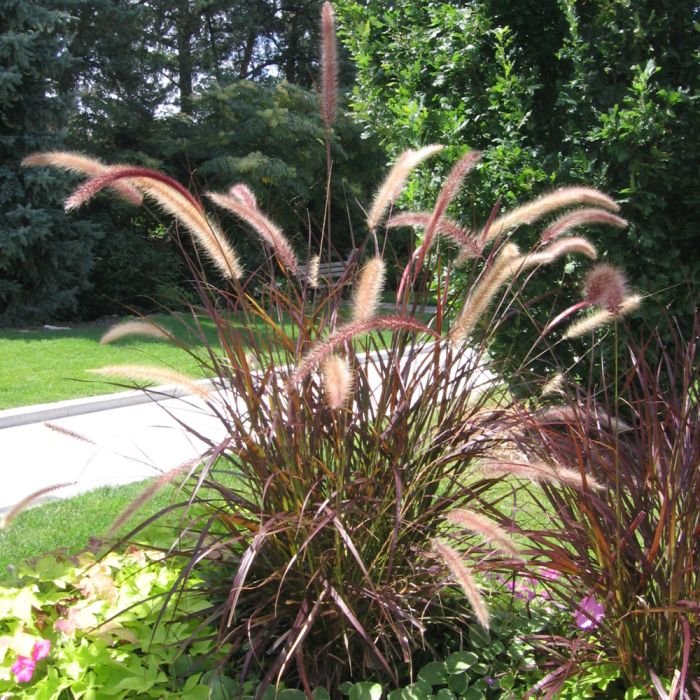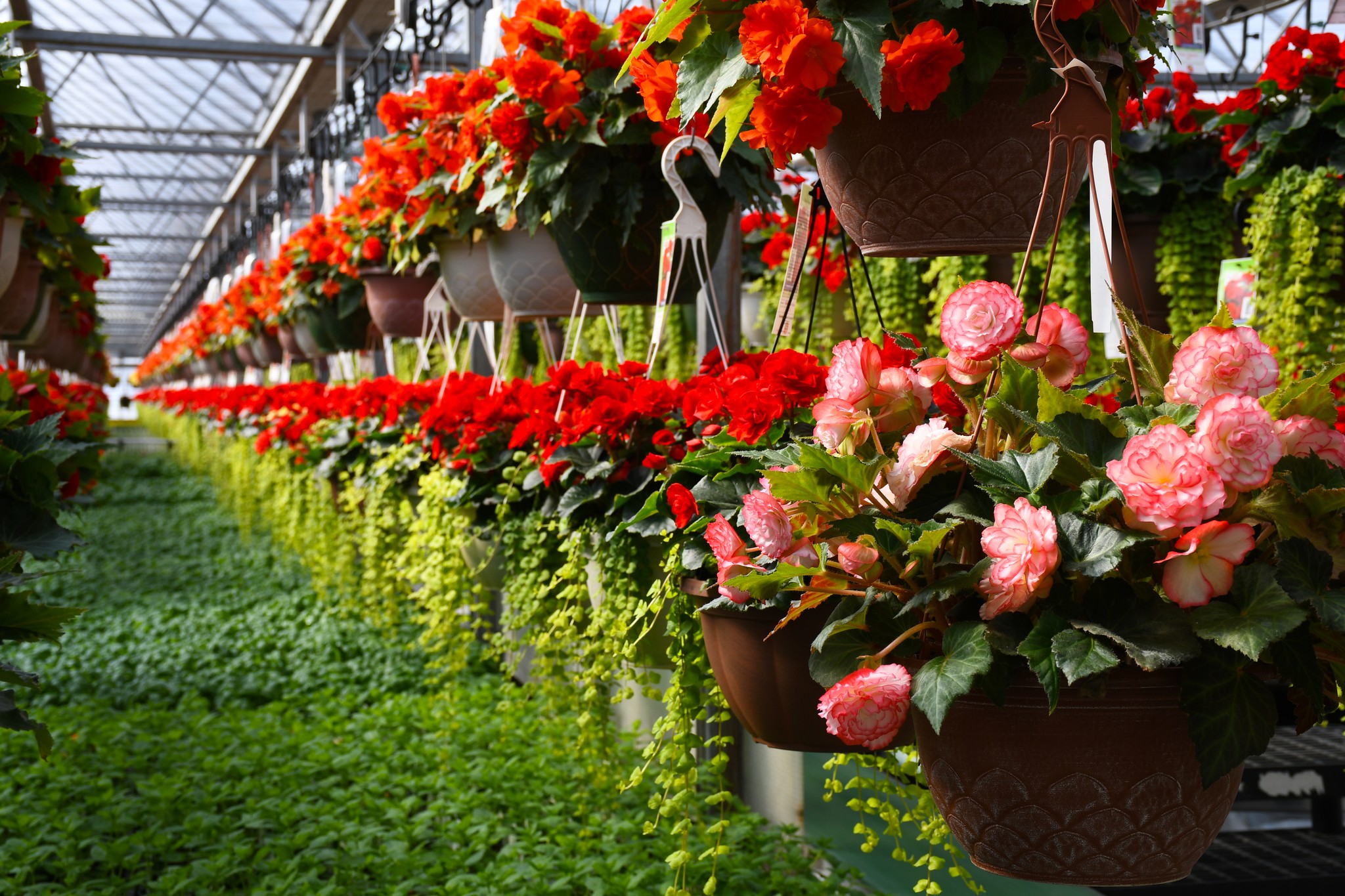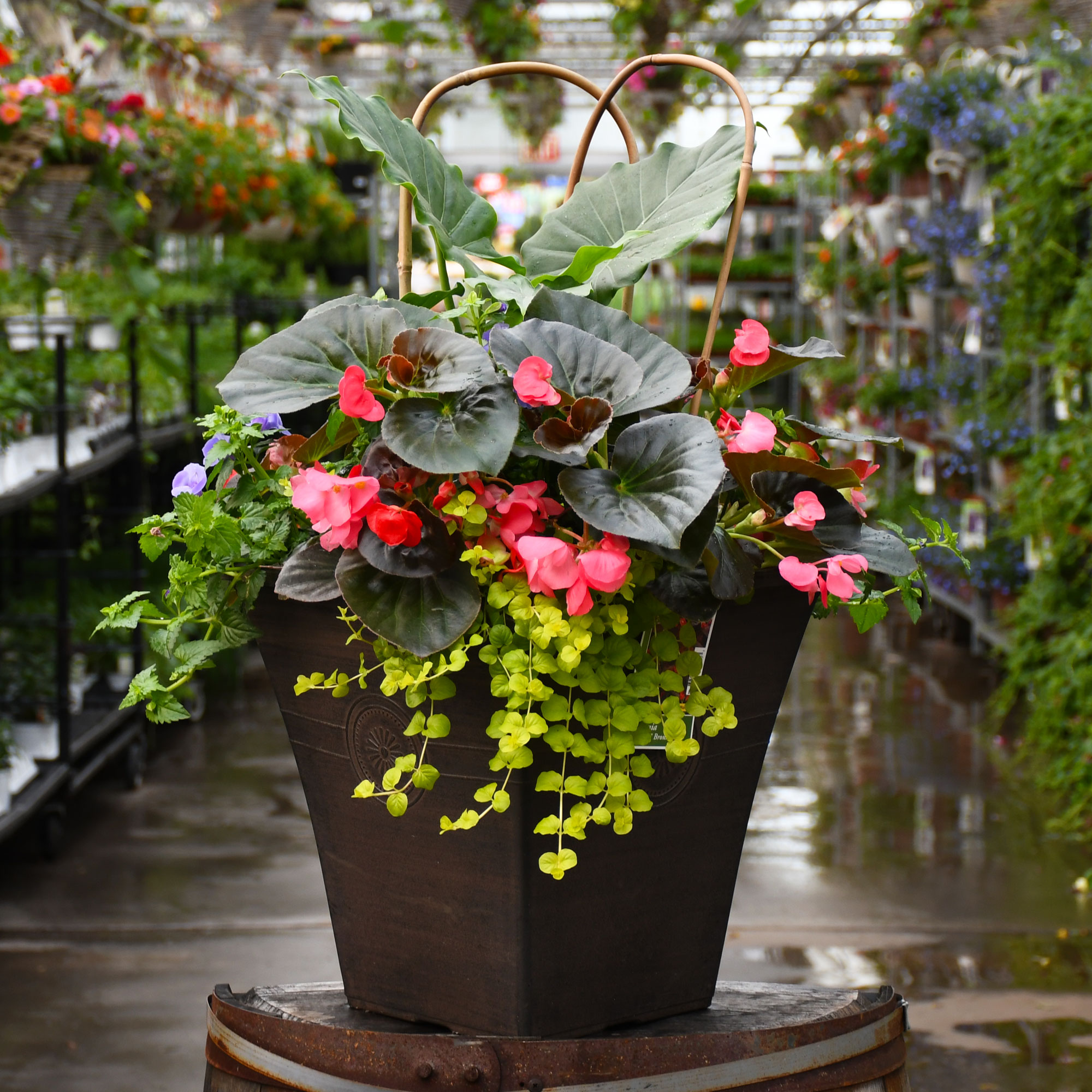Pennisetum, Fountain Grass 'Purple'


Out of stock
Temporarily Out of Stock- Sun Preference
- Full-Sun
Description
An extremely showy variety of fountain grass used as a focal point in the garden or containers; an upright clump of deep burgundy-purple bearing bottlebrush flowers that change from red to tan; may be treated as an annual; favored as a municipal planting
Direct from the Grower
When you see the Gerten Grown logo on our annuals, you know you're getting a fresh plant directly from our greenhouse. We've been perfecting our growing process for over four generations and pride ourselves on providing local quality and freshness to our customers. Better pricing on better quality plant material, that's Gerten Grown.
Details
Purple Fountain Grass | Pennisetum setaceum 'Rubrum'
Hardiness Zone: (annual)
Description:
An extremely showy variety of fountain grass used as a focal point in the garden or containers; an upright clump of deep burgundy-purple bearing bottlebrush flowers that change from red to tan; may be treated as an annual; favored as a municipal planting
Ornamental Features
Purple Fountain Grass has masses of beautiful plumes of red flowers with tan overtones rising above the foliage from late summer to mid fall, which are most effective when planted in groupings. Its grassy leaves are plum purple in color. As an added bonus, the foliage turns a gorgeous dark red in the fall.
Landscape Attributes
Purple Fountain Grass is an herbaceous annual with a shapely form and gracefully arching foliage. It brings an extremely fine and delicate texture to the garden composition and should be used to full effect.
This is a relatively low maintenance plant, and is best cleaned up in early spring before it resumes active growth for the season. Deer don't particularly care for this plant and will usually leave it alone in favor of tastier treats. It has no significant negative characteristics.
Purple Fountain Grass is recommended for the following landscape applications;
- Accent
- Mass Planting
- Rock/Alpine Gardens
- General Garden Use
- Container Planting
Planting & Growing
Purple Fountain Grass will grow to be about 4 feet tall at maturity, with a spread of 3 feet. Although it's not a true annual, this plant can be expected to behave as an annual in our climate if left outdoors over the winter, usually needing replacement the following year. As such, gardeners should take into consideration that it will perform differently than it would in its native habitat.
This plant should only be grown in full sunlight. It is very adaptable to both dry and moist growing conditions, but will not tolerate any standing water. It is considered to be drought-tolerant, and thus makes an ideal choice for a low-water garden or xeriscape application. It is not particular as to soil type or pH. It is highly tolerant of urban pollution and will even thrive in inner city environments. This is a selected variety of a species not originally from North America. It can be propagated by division; however, as a cultivated variety, be aware that it may be subject to certain restrictions or prohibitions on propagation.
Purple Fountain Grass is a fine choice for the garden, but it is also a good selection for planting in outdoor pots and containers. Because of its height, it is often used as a 'thriller' in the 'spiller-thriller-filler' container combination; plant it near the center of the pot, surrounded by smaller plants and those that spill over the edges. It is even sizeable enough that it can be grown alone in a suitable container. Note that when growing plants in outdoor containers and baskets, they may require more frequent waterings than they would in the yard or garden.
More Information
| Sun Preference | Full-Sun |
|---|---|
| Plant Life Cycle | Annual |
| Mature Height (Range) | 37" - 48" |
| Mature Spread (Range) | 24" - 36" |


